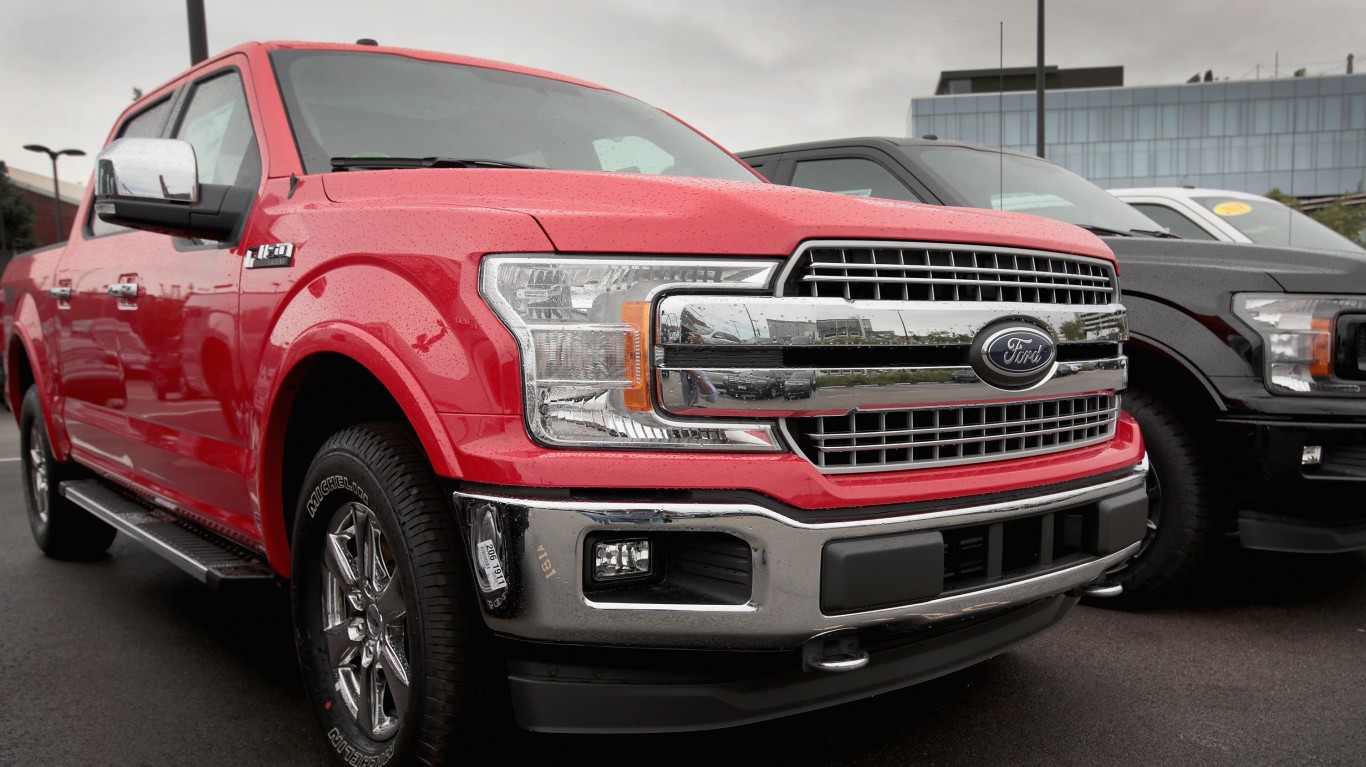
Earlier this week, Ford Motor Co. (NYSE: F) said that it had not yet decided when it would restart U.S. operations that were shut down in mid-March. The shutdown led to a net loss of $0.50 per share in the first quarter, and Ford has not produced a vehicle in more than a month.
The company has suspended its dividend due to the coronavirus pandemic, halted its share buyback program, reduced capital spending and deferred parts of executive salaries as it conserves cash to get the company through an unprecedented set of events.
Ford faces some serious headwinds. For the year to date, the stock price has tumbled by nearly 47% compared to the S&P 500 index, which is down about 11.8%. In the first quarter of this year, total sales were down 12.5% and pickup sales, Ford’s bread and butter, were down 7.0%.
The decline in pickup sales did not hurt overall industry truck sales in April, however. According to industry research firm Autodata, truck sales last month surpassed passenger car sales for the first time ever. About 17,000 more pickup trucks were sold in April. Because the Detroit Three and many other automakers no longer report monthly data, the official tally won’t be available until early July.
Trucks Account for More Than Half of Ford’s Total Sales
In the first quarter of the year, Ford’s truck sales totaled 263,757 units, 51.1% of Ford brand sales. Of those, 186,562 were F-150 Series pickups. Pickup sales were down 13.1% year over year.
For the quarter, passenger car sales fell by 36.0% year over year to 62,853. Sport utility vehicles accounted for 189,720 sales in the quarter. Truck sales, including Ranger, E-Series, Transit vans and heavy trucks, were down 5.4% year over year to 490,769 units.
Not only do pickups sell better than cars, but automakers put a premium price on those pickups because U.S. consumers have shown that they are willing to pay. According to data from industry researchers at Kelley Blue Book, the average transaction price for a pickup truck in April was $50,719. The average price for all Ford and Lincoln vehicles sold in April was $43,358.
Year over year, the average pickup price increased by 1.1% while the company’s overall average rose by 3.4%. Predictably, as the availability of passenger vehicles is constrained, prices rise because demand for the less-expensive cars increases.
In only five years, the auto industry has steered U.S. consumers away from cars and into pickups. Just five years ago, cars outsold pickups by more than half a million units a month. Then the Detroit Three — Ford, General Motors Co. (NYSE: GM) and Fiat Chrysler Automobiles N.V. (NYSE: FCAU) — retooled and ramped up truck production. Investment bank Evercore ISI estimated that 40% of the Detroit Three’s sales in April were full-size pickups like the Ford F-150, Chevy Silverado and Ram 1500.
Ford Needs to Get Building Pickups Again
The company has not yet announced a date when it will begin to reopen closed Ford plants in the United States. In an announcement last week, Ford Chief Operating Officer Jim Farley said the company would “restart our operations and safely bring back our employees” when “we’re ready.”
When GM announced first-quarter results earlier this week, the company said it will begin reopening its plants in the United States and Canada on May 18. GM’s two full-size pickups, the Chevy Silverado and GMC Sierra, combined for a 37% market share in the first quarter, slightly better than the 35% share for Ford’s F-150.
FCA also plans to restart most of its U.S. plants during the week of May 18. FCA’s Ram pickups had a 24% share in the first quarter. On the company’s conference call, CEO Mike Manley said certain models, including some pickups “will be running short” and that he expects truck sales to outperform other models’ sales again this month.
Ford operates four truck plants in the United States and supports 19,000 Ford employees and some 2,000 suppliers. Globally, Ford trucks generate an estimated $50.2 billion in sales of its F-Series pickups.
With auto dealerships also shut down due to stay-at-home orders, sales for April fell an estimated 53%, which calculates out to a seasonally adjusted annual rate (SAAR) of around 7.5 million units. The SAAR in April 2019 was 16.5 million, and final 2019 totals topped 17 million. Until last month, the record low SAAR was 8.8 million units in December of 1981. Some dealers have tried online sales, but results have been poor.
The company’s balance sheet troubles and junk-rated debt make a recovery even more difficult. Whether Ford’s problems are the result of family leadership or poor executive decision-making, the company has to get back on its feet quickly.
Thank you for reading! Have some feedback for us?
Contact the 24/7 Wall St. editorial team.




